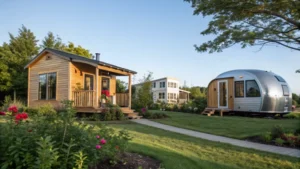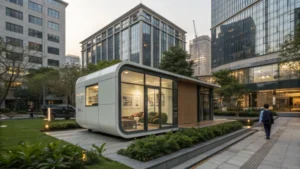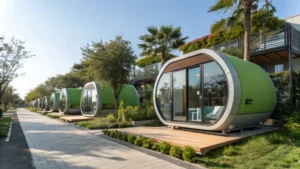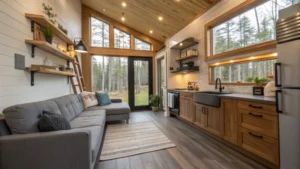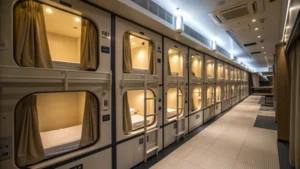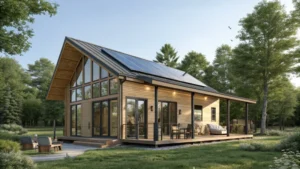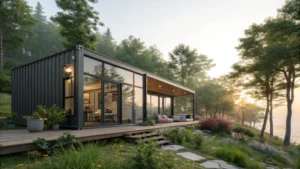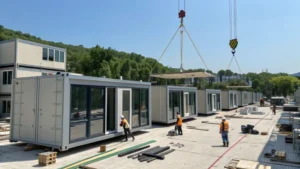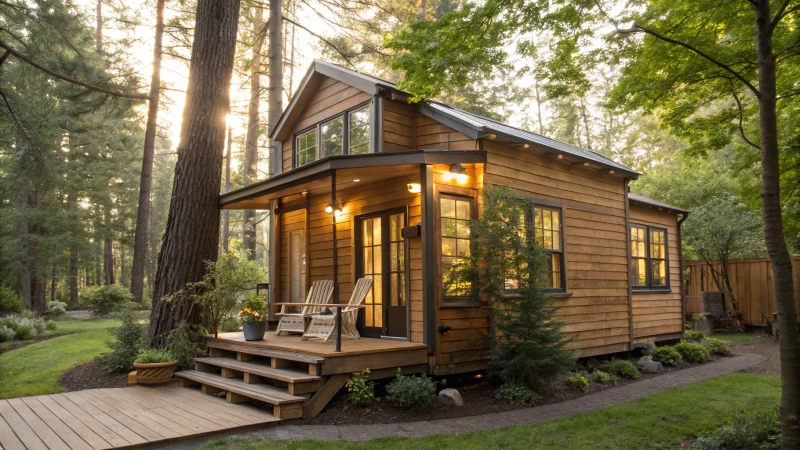
Dreaming of a tiny house adventure? Finding the perfect legal spot is your first quest.
You can legally place your tiny house on private land, in tiny house communities, RV parks, campgrounds, or even urban areas where zoning permits. Each option requires careful consideration of local zoning laws, permits, and potential fees to ensure compliance and a seamless transition into tiny living.
I remember when I first considered joining the tiny house movement—so much excitement mixed with a dash of anxiety about where I could legally park my new abode. While this brief overview provides a quick answer, understanding the nitty-gritty of each placement option is crucial. From the allure of private land ownership to the camaraderie of tiny house communities, each choice comes with its own set of pros and cons. Dive deeper into our guide to explore the financial implications, community vibes, and zoning challenges to find that perfect spot for your tiny dream home.
Tiny houses can be placed in any urban area.False
Urban placement depends on local zoning laws, which vary widely.
RV parks often allow tiny houses legally.True
Many RV parks accommodate tiny houses, but check local regulations.
What Are the Key Zoning Laws for Tiny Houses?
Thinking about a tiny house? Navigating zoning laws is key to making that dream a reality.
Key zoning laws for tiny houses include minimum square footage requirements, classification as a primary residence or accessory dwelling unit, and location-specific restrictions. Understanding these laws is crucial for compliance and successful tiny house living.
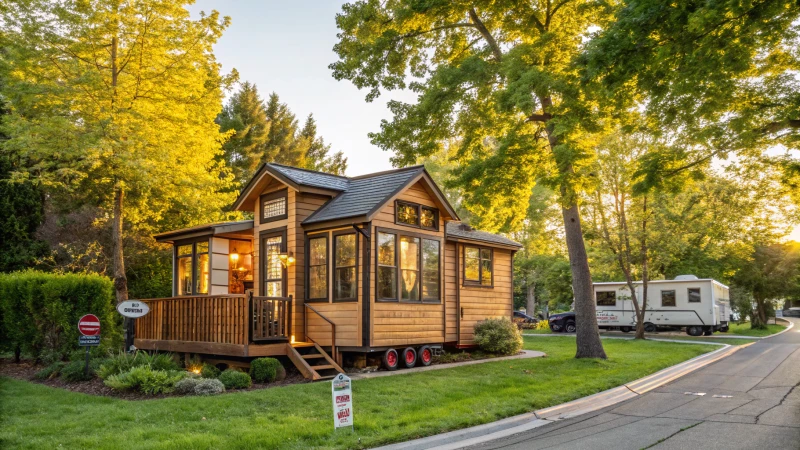
Zoning Laws Overview
Let me share a story—when I first thought about embracing the tiny house movement, I was filled with excitement about downsizing and living simply. But then came the research into zoning laws, which felt a bit like untangling a giant knot. You see, zoning laws are these local government rules that decide how land can be used in different areas. They vary so much from one place to another that it's like trying to solve a puzzle without all the pieces. It's important to check the local zoning codes1 before purchasing land.
Minimum Size Requirements
One of the first hurdles I hit was the minimum size requirement. Tiny houses often range between 100 to 400 square feet, which is perfect for minimalist living but not always for meeting local codes. Some areas have begun adapting their codes to accommodate the growing tiny house movement2. I remember scrolling through a list of cities and feeling hopeful when I saw places like Austin, Texas, with no minimum size requirement. It felt like finding a hidden gem in a sea of rules!
| City | Minimum Size Requirement |
|---|---|
| Portland, OR | 150 sq ft |
| Fresno, CA | 200 sq ft |
| Austin, TX | No minimum |
Primary Residence vs. Accessory Dwelling Unit
When figuring out where my tiny house would fit in my life, I had to consider whether it would be my primary residence or an ADU (Accessory Dwelling Unit). This decision isn't just about where you park your house but affects taxes and utilities. In some places, tiny homes are only allowed as ADUs, meaning they have to be attached to a property with a main house. It's kind of like being a permanent guest at a friend's place.
Location-Specific Restrictions
The location can make or break your tiny house plans. I noticed that rural areas tend to be more lenient with zoning laws compared to urban settings. It's almost as if the wide-open spaces say, "Come on in!" while cities are like, "Let's see if you fit." For instance, in urban areas like New York3, tiny houses face stricter rules due to population density concerns.
Understanding Building Codes and Permits
And then there are building codes and permits. They're like the fine print of tiny house living, ensuring your home is safe and up to standard. From connecting utilities to adhering to construction norms, these rules are essential for those planning to stay put for the long haul. Having a legal expert4 who gets these laws can be invaluable.
Common Challenges
- Cost of Land: Urban areas can be pricey, which often nudges people towards more rural properties.
- Permit Complexity: The permit process can feel overwhelming, like you're trying to get a backstage pass to your own concert.
- Community Acceptance: Not every neighborhood is thrilled about changes that accommodate tiny houses.
Navigating these challenges has taught me that understanding regulations is key to making informed decisions and turning the tiny house dream into a livable reality. Whether you’re drawn by the allure of minimalism or the promise of financial freedom, knowing the rules helps you step confidently into this new way of living.
Tiny houses can be primary residences in urban areas.False
Urban areas often have stricter zoning laws, limiting tiny houses to ADUs.
Rural areas generally allow tiny homes as primary residences.True
Rural zones tend to have more lenient regulations, permitting tiny homes.
How Do Tiny House Communities Work?
Living in a tiny house community feels like being part of a close-knit family, where sustainability meets simplicity.
Tiny house communities work by combining shared infrastructure and communal spaces with a supportive social network. Residents contribute to maintenance and enjoy a mix of privacy and interaction, creating a collaborative and sustainable living environment.
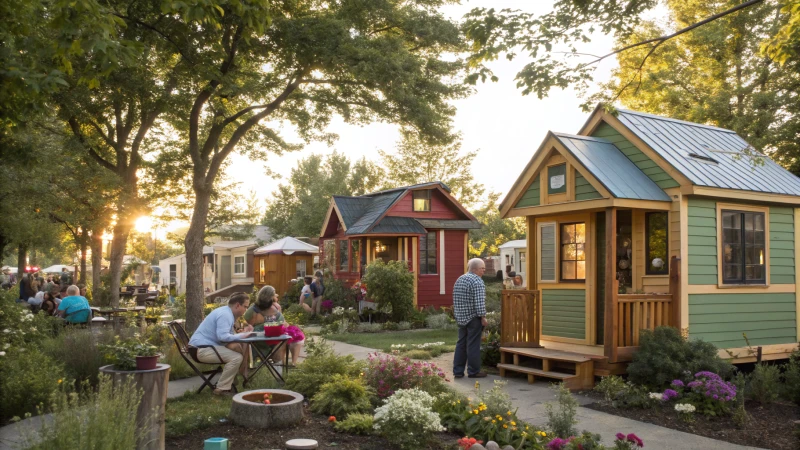
The Structure of Tiny House Communities
Imagine waking up to the soft chirping of birds and stepping out into a cozy neighborhood where everyone's door is just a few steps away. That's what tiny house communities are all about. Picture several small homes nestled together on a plot of land, complete with infrastructure like roads5, utilities, and waste management systems. It's like having your cake and eating it too—a ready-to-move-in solution without the hefty price tag of traditional homes.
Shared Amenities and Costs
I remember the first time I gathered with my neighbors in the communal garden; we were planting herbs for our summer barbecue. These shared spaces, like laundries and recreational areas, become the backdrop for everyday interactions that build friendships. By sharing amenities, everyone saves money—here's how it typically breaks down:
| Expense Type | Description |
|---|---|
| Utilities | Electricity, water, and waste disposal |
| Maintenance | Upkeep of communal spaces and infrastructure |
| Membership | Monthly or annual fees for community services |
While costs are generally lower than traditional housing, they vary depending on location and amenities.
Zoning Laws and Legal Considerations
Navigating zoning laws is like mastering a new dance. Each step—understanding local regulations and housing codes—is crucial for success. These laws can dictate everything from the size of your home to its placement on the land. Some cities are more tiny-house-friendly, embracing sustainable housing with open arms, while others require a bit more legwork to find your footing.
Community Dynamics
One of the most heartwarming aspects of tiny house living is the sense of community. Regular community meetings are like town hall gatherings where everyone has a voice, and collaborative projects, whether it's building a new gazebo or organizing a workshop, keep us all connected.
- Community Meetings: Regular gatherings to discuss community affairs.
- Collaborative Projects: Initiatives such as communal gardens or workshops.
Financial Implications
The financial side of joining a tiny house community might surprise you. It's often more affordable than buying a traditional home, but there are still some numbers to crunch:
- Initial Investment: Cost of the tiny house and any customization.
- Ongoing Fees: Monthly maintenance or membership fees.
I found budgeting tips6 invaluable for managing these expenses effectively—like having a map on a treasure hunt.
Choosing the Right Community
Finding the right community is like choosing your favorite flavor of ice cream—it should match your personal tastes. Whether you're drawn to an eco-friendly vibe or a space that celebrates artistic expression, it's crucial to research community options7 thoroughly before diving in.
Tiny house communities have lower costs than traditional housing.True
Shared amenities and reduced utility expenses lower overall living costs.
Zoning laws do not affect tiny house community operations.False
Zoning laws dictate home size and placement, impacting community setup.
Can You Place a Tiny House in an RV Park?
Ever dreamt of living tiny and wondered if an RV park could be your new backyard? Let's explore the ins and outs together.
Yes, you can park a tiny house in an RV park, but your tiny home usually needs to meet RVIA standards and comply with specific park rules.
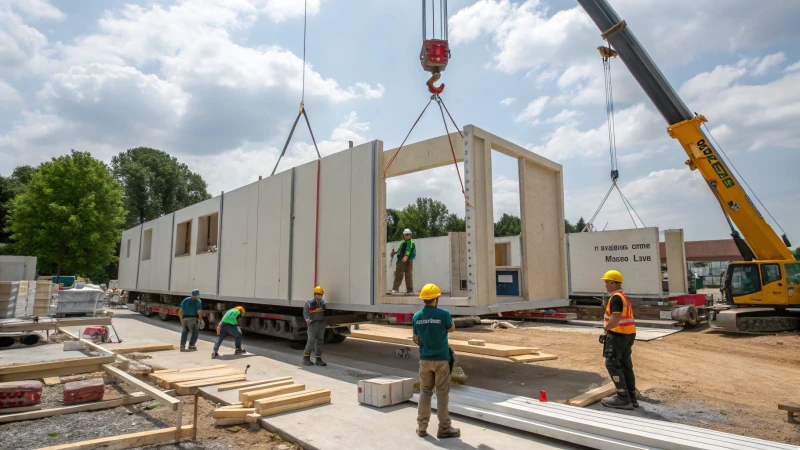
I remember the first time I considered moving my tiny house to an RV park. I had visions of cozy campfires, friendly neighbors, and a simpler lifestyle. But before I could dive into this dream, I needed to understand the rules and regulations that come with parking a tiny house in these spots.
Understanding RV Park Regulations
One thing I've learned is that each RV park can have its own set of rules. Generally, your tiny house needs to be built to Recreational Vehicle Industry Association (RVIA)8 standards, which ensures safety and quality similar to traditional RVs. Before you pack up, it's always a good idea to call ahead and confirm what each park requires.
Certification and Compliance
Getting your tiny home RVIA certified might sound daunting, but it's crucial. This certification process was a bit like getting my driver's license—nerve-wracking but necessary. It assures park owners that my tiny house is safe and up to standard. And trust me, finding certified builders made this process much smoother.
It's also wise to confirm with park management if there are additional permits or inspections needed before you move in. Some parks might have unique criteria or regulations9.
Fees and Leasing Options
Ah, the question of fees! Just like renting an apartment, costs can vary based on where you're parked. Urban areas might charge anywhere from $500 to $1,200 monthly, while rural spots are more budget-friendly, around $150 to $500. My advice? Always double-check these fees and see if there are long-term leasing options available.
Here's a quick comparison of potential costs:
| Location Type | Typical Monthly Fee Range |
|---|---|
| Urban RV Parks | $500 - $1,200 |
| Suburban RV Parks | $300 - $800 |
| Rural RV Parks | $150 - $500 |
Alternative Tiny House Locations
While RV parks are fantastic for some, they're not the only option out there. I've explored tiny house communities10, private land, and even considered putting my tiny house in someone's backyard as an accessory dwelling unit (ADU). Each choice comes with its own vibe and set of challenges.
If you're like me, seeking community or solitude, these options can provide a better fit for your lifestyle and budget11. Connecting with local tiny house enthusiasts can also offer valuable insights into finding the perfect spot.
Tiny houses must have RVIA certification for RV parks.True
RVIA certification ensures safety and compliance with RV park standards.
All RV parks allow tiny houses without restrictions.False
Each RV park may have unique rules and not all permit tiny houses.
What Are the Challenges of Urban Tiny Living?
Ever thought about trading in your sprawling suburban home for a cozy, compact urban retreat? It sounds dreamy but comes with its own set of hurdles.
Urban tiny living challenges include navigating zoning laws, optimizing limited space, and managing higher utility costs. Overcoming these requires adaptability and creative problem-solving to embrace a minimalist lifestyle fully.
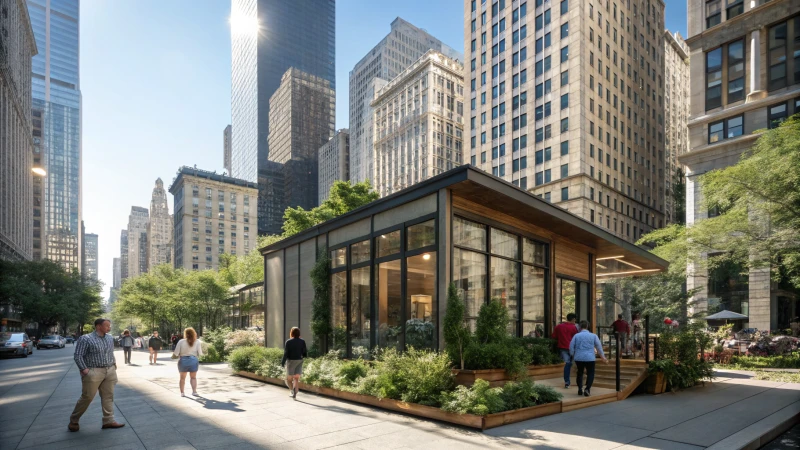
Navigating Zoning and Regulatory Barriers
When I first considered urban tiny living, the zoning laws felt like an invisible fence blocking my path. Many cities have regulations that simply don't play nice with the idea of tiny homes. It's like trying to fit a square peg in a round hole when you realize your dream home might not be legal in your dream location. The maze of permits and variances becomes a whole new adventure. In some places, the minimum square footage laws make you feel like you're being asked to live in a shoe box that's too small even for your shoes.
| Zoning Challenges | Implications |
|---|---|
| Strict Regulations | Limits on where tiny homes can be placed |
| Minimum Size Rules | Many cities have minimum size requirements |
| Permit Requirements | Often need special permits12 to comply |
Managing Limited Space Effectively
Living in a tiny home isn't just about downsizing; it's about making every inch count. I remember the first time I had to choose between a favorite book and a pair of shoes. Space management becomes this fascinating puzzle that you solve daily. Suddenly, storage solutions aren't just clever—they're essential lifelines. Like when you discover that the bed can also be a closet. Every corner is an opportunity; every item is a choice.
- Example: Use vertical space by installing shelves above door frames.
- Tip: Opt for multi-functional furniture13 that can fold away when not in use.
Cost Considerations and Utility Expenses
The myth that tiny homes are always cheaper took a hit when I saw urban land prices. It turns out, downsizing doesn't always mean downgrading on costs. In cities, land prices can flip the script, turning potential savings into unexpected expenses. Plus, there's the added cost of specialized utility setups—like off-grid solutions14 that sound so eco-chic but come with their own price tags.
| Expense Type | Potential Cost Drivers |
|---|---|
| Land and Taxes | High urban land costs and property taxes |
| Utilities | Specialized installations needed |
| Maintenance | Regular upkeep due to small space wear |
Privacy and Lifestyle Adjustments
Privacy is another layer to peel back in tiny living. In a space where walls are thin and neighbors closer, the idea of privacy takes on new meaning. It's an adjustment, but one that often leads to valuing experiences over possessions. Soundproofing becomes a kind of new luxury, and decluttering isn't just a seasonal event but a daily ritual. Yet, this shift offers its own rewards—a simpler life with more room for meaningful moments.
- Insight: Soundproofing walls can enhance privacy.
- Consideration: Embrace decluttering as part of your routine through creative solutions15.
Each challenge in urban tiny living is a stepping stone toward a lifestyle that's both rewarding and demanding. By tapping into community support and online resources, you find ways to turn these obstacles into opportunities for growth and innovation in compact living.
Zoning laws often prohibit tiny homes in urban areas.True
Many cities have strict zoning regulations that limit where tiny homes can be placed.
Tiny homes in urban areas are always cheaper than traditional homes.False
High land prices and specialized utility installations can increase costs in urban settings.
Conclusion
Explore legal options for placing your tiny house, including private land, communities, RV parks, and urban areas. Understand zoning laws and permits to ensure compliance and successful living.
-
Explore this link to understand how local zoning codes impact your ability to place a tiny house. ↩
-
Learn how certain regions are adjusting their zoning codes to accommodate the rise in tiny house popularity. ↩
-
Discover the unique challenges and regulations tiny houses face in densely populated urban areas. ↩
-
Consult a legal expert to gain detailed insights into navigating complex zoning laws. ↩
-
Explore the specifics of what infrastructure tiny house communities provide, helping you understand their logistical setup. ↩
-
Discover effective budgeting strategies to manage costs within a tiny house community efficiently. ↩
-
Learn how to evaluate different tiny house communities to find the one that best fits your lifestyle and preferences. ↩
-
Clicking this link helps readers understand the safety and quality standards required for tiny homes in RV parks. ↩
-
Learn about specific rules and inspections that may be needed for parking a tiny house in an RV park. ↩
-
Discover alternative living arrangements for tiny houses beyond RV parks. ↩
-
Explore financial implications of choosing between RV parks and other living arrangements for tiny homes. ↩
-
Understand zoning laws affecting tiny homes to ensure legal compliance. ↩
-
Discover versatile furniture options to maximize space efficiency. ↩
-
Explore sustainable energy solutions for urban tiny living. ↩
-
Find ways to enhance privacy in compact living environments. ↩



